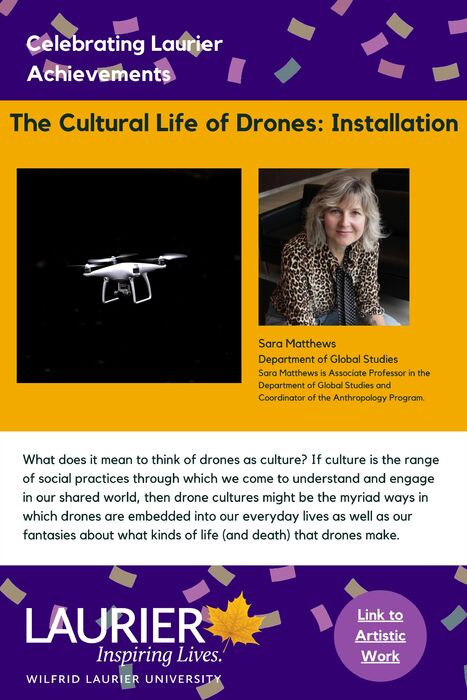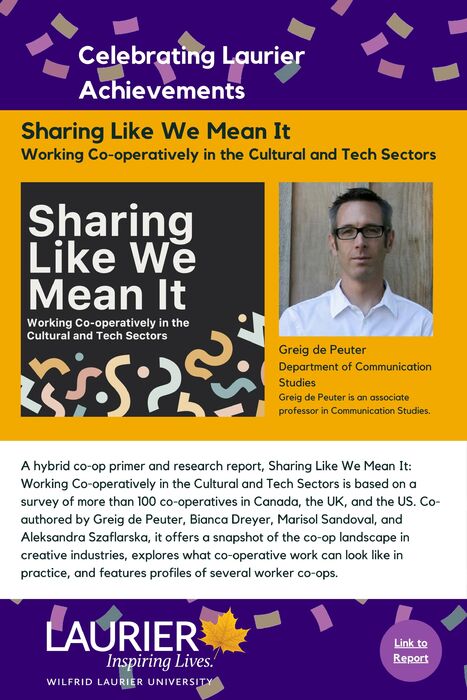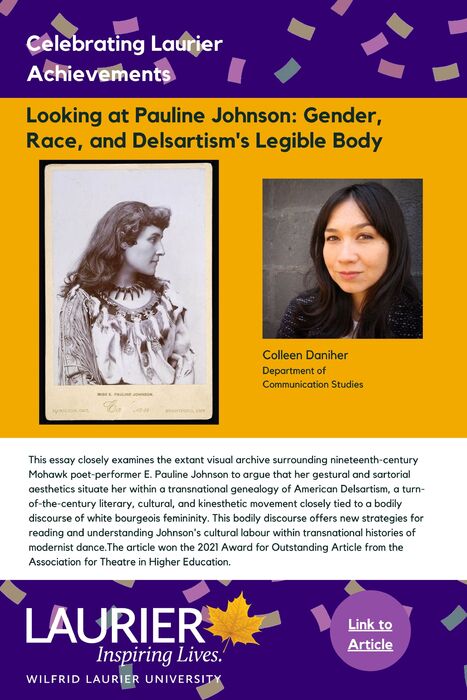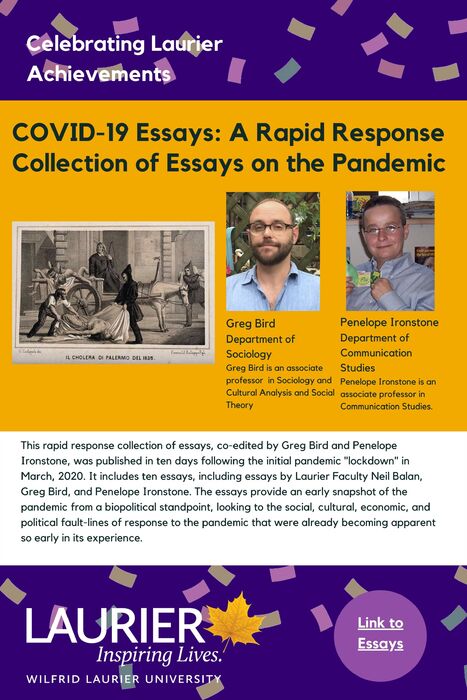-
 The Cultural Life of Drones: music and installation
The Cultural Life of Drones: music and installation What does it mean to think of drones as culture? If culture is the range of social practices through which we come to understand and engage in our shared world, then drone cultures might be the myriad ways in which drones are embedded into our everyday lives as well as our fantasies about what kinds of lives that drones make.
-
 Sharing Like We Mean It Working Co-operatively in the Cultural and Tech Sectors
Sharing Like We Mean It Working Co-operatively in the Cultural and Tech Sectors A hybrid co-op primer and research report, Sharing Like We Mean It: Working Co-operatively in the Cultural and Tech Sectors is based on a survey of more than 100 co-operatives in Canada, the UK, and the US. It offers a snapshot of the co-op landscape in creative industries, explores what co-operative work can look like in practice, and features profiles of several worker co-ops.
-
 Looking at Pauline Johnson: Gender, Race, and Delsartism's Legible Body
Looking at Pauline Johnson: Gender, Race, and Delsartism's Legible Body This essay closely examines the extant visual archive surrounding nineteenth-century Mohawk poet-performer E. Pauline Johnson to argue that her gestural and sartorial aesthetics situate her within a transnational genealogy of American Delsartism, a turn-of-the-century literary, cultural, and kinesthetic movement closely tied to a bodily discourse of white bourgeois femininity. This bodily discourse offers new strategies for reading and understanding Johnson's cultural labour within transnational histories of modernist dance.The article won the 2021 Award for Outstanding Article from the Association for Theatre in Higher Education.
-
 COVID-19 Essays: A Rapid Response Collection of Essays on the Pandemic
COVID-19 Essays: A Rapid Response Collection of Essays on the Pandemic This rapid response collection of essays, co-edited by Greg Bird and Penelope Ironstone, was published in 10 days following the initial pandemic "lockdown" in March, 2020. It includes 10 essays, including essays by Laurier Faculty Neil Balan, Greg Bird, and Penelope Ironstone. The essays provide an early snapshot of the pandemic from a biopolitical standpoint, looking to the social, cultural, economic, and political fault-lines of response to the pandemic that were already becoming apparent so early in its experience.
-
 Beyond the Finish-Line: Images, Evidence, and the History of the Photo-Finish
Beyond the Finish-Line: Images, Evidence, and the History of the Photo-Finish In the 1880s photographers and sports enthusiasts confidently declared the end of dead heats in sporting competition. Reflecting a broader social belief in technology, proponents of the camera stressed that the device could provide definitive proof of who won and who lost. Yet despite this remedy for the inadequate human eye, competitive races between horses, boats, and bicycles ended too close to call a sole champion. More than a century later, when cameras can subdivide the second into ten-thousandths and beyond, athletes continue to cross the finish line in ties.
-
 Visibility and Control: Cameras and Certainty In Governing
Visibility and Control: Cameras and Certainty In Governing Visibility and Control: Cameras and Certainty in Governing addresses the ways in which camera-produced images are used to support governmental authority. The text begins by examining some of the basic levels at which the body interacts with media, and then expands the scope of the analysis to consider the use of CCTV in urban environments and how that affects the experience of space. This shows how the determination of the subject and the observer is affected by interaction with and exposure to images produced by cameras.
 The Cultural Life of Drones: music and installation What does it mean to think of drones as culture? If culture is the range of social practices through which we come to understand and engage in our shared world, then drone cultures might be the myriad ways in which drones are embedded into our everyday lives as well as our fantasies about what kinds of lives that drones make.
The Cultural Life of Drones: music and installation What does it mean to think of drones as culture? If culture is the range of social practices through which we come to understand and engage in our shared world, then drone cultures might be the myriad ways in which drones are embedded into our everyday lives as well as our fantasies about what kinds of lives that drones make. Sharing Like We Mean It Working Co-operatively in the Cultural and Tech Sectors A hybrid co-op primer and research report, Sharing Like We Mean It: Working Co-operatively in the Cultural and Tech Sectors is based on a survey of more than 100 co-operatives in Canada, the UK, and the US. It offers a snapshot of the co-op landscape in creative industries, explores what co-operative work can look like in practice, and features profiles of several worker co-ops.
Sharing Like We Mean It Working Co-operatively in the Cultural and Tech Sectors A hybrid co-op primer and research report, Sharing Like We Mean It: Working Co-operatively in the Cultural and Tech Sectors is based on a survey of more than 100 co-operatives in Canada, the UK, and the US. It offers a snapshot of the co-op landscape in creative industries, explores what co-operative work can look like in practice, and features profiles of several worker co-ops. Looking at Pauline Johnson: Gender, Race, and Delsartism's Legible Body This essay closely examines the extant visual archive surrounding nineteenth-century Mohawk poet-performer E. Pauline Johnson to argue that her gestural and sartorial aesthetics situate her within a transnational genealogy of American Delsartism, a turn-of-the-century literary, cultural, and kinesthetic movement closely tied to a bodily discourse of white bourgeois femininity. This bodily discourse offers new strategies for reading and understanding Johnson's cultural labour within transnational histories of modernist dance.The article won the 2021 Award for Outstanding Article from the Association for Theatre in Higher Education.
Looking at Pauline Johnson: Gender, Race, and Delsartism's Legible Body This essay closely examines the extant visual archive surrounding nineteenth-century Mohawk poet-performer E. Pauline Johnson to argue that her gestural and sartorial aesthetics situate her within a transnational genealogy of American Delsartism, a turn-of-the-century literary, cultural, and kinesthetic movement closely tied to a bodily discourse of white bourgeois femininity. This bodily discourse offers new strategies for reading and understanding Johnson's cultural labour within transnational histories of modernist dance.The article won the 2021 Award for Outstanding Article from the Association for Theatre in Higher Education. COVID-19 Essays: A Rapid Response Collection of Essays on the Pandemic This rapid response collection of essays, co-edited by Greg Bird and Penelope Ironstone, was published in 10 days following the initial pandemic "lockdown" in March, 2020. It includes 10 essays, including essays by Laurier Faculty Neil Balan, Greg Bird, and Penelope Ironstone. The essays provide an early snapshot of the pandemic from a biopolitical standpoint, looking to the social, cultural, economic, and political fault-lines of response to the pandemic that were already becoming apparent so early in its experience.
COVID-19 Essays: A Rapid Response Collection of Essays on the Pandemic This rapid response collection of essays, co-edited by Greg Bird and Penelope Ironstone, was published in 10 days following the initial pandemic "lockdown" in March, 2020. It includes 10 essays, including essays by Laurier Faculty Neil Balan, Greg Bird, and Penelope Ironstone. The essays provide an early snapshot of the pandemic from a biopolitical standpoint, looking to the social, cultural, economic, and political fault-lines of response to the pandemic that were already becoming apparent so early in its experience. Beyond the Finish-Line: Images, Evidence, and the History of the Photo-Finish In the 1880s photographers and sports enthusiasts confidently declared the end of dead heats in sporting competition. Reflecting a broader social belief in technology, proponents of the camera stressed that the device could provide definitive proof of who won and who lost. Yet despite this remedy for the inadequate human eye, competitive races between horses, boats, and bicycles ended too close to call a sole champion. More than a century later, when cameras can subdivide the second into ten-thousandths and beyond, athletes continue to cross the finish line in ties.
Beyond the Finish-Line: Images, Evidence, and the History of the Photo-Finish In the 1880s photographers and sports enthusiasts confidently declared the end of dead heats in sporting competition. Reflecting a broader social belief in technology, proponents of the camera stressed that the device could provide definitive proof of who won and who lost. Yet despite this remedy for the inadequate human eye, competitive races between horses, boats, and bicycles ended too close to call a sole champion. More than a century later, when cameras can subdivide the second into ten-thousandths and beyond, athletes continue to cross the finish line in ties. Visibility and Control: Cameras and Certainty In Governing Visibility and Control: Cameras and Certainty in Governing addresses the ways in which camera-produced images are used to support governmental authority. The text begins by examining some of the basic levels at which the body interacts with media, and then expands the scope of the analysis to consider the use of CCTV in urban environments and how that affects the experience of space. This shows how the determination of the subject and the observer is affected by interaction with and exposure to images produced by cameras.
Visibility and Control: Cameras and Certainty In Governing Visibility and Control: Cameras and Certainty in Governing addresses the ways in which camera-produced images are used to support governmental authority. The text begins by examining some of the basic levels at which the body interacts with media, and then expands the scope of the analysis to consider the use of CCTV in urban environments and how that affects the experience of space. This shows how the determination of the subject and the observer is affected by interaction with and exposure to images produced by cameras.